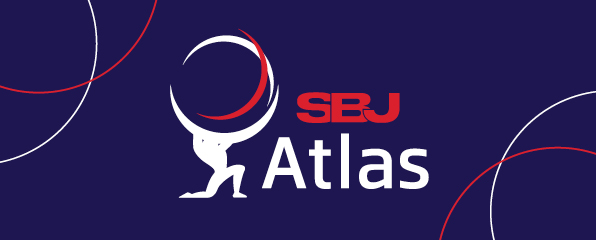Tech Trends Shaping the Sports Industry
Technology is evolving more rapidly today than ever before. Not long ago, technology was simply viewed as a standalone department within an organization, a necessity for doing business and a cost center. Today, it is integral to any organization’s success.
“Technology is an integral part of all areas of business today. In the sports business it plays a critical role in the acquisition and retention of fans. From content consumption to ticket sales, food and beverage, etc., no area of the sports business does not have a technology initiative at the center of what drives its business,” said David Nugent, CEO of Next League, the leading global digital evolution partner in the sports industry. “Executives really need to be developing the kinds of strategies that include technology investments that are going to generate revenue at the end of the day.”
This evolution presents a major challenge.
“If you're a tech exec inside of a sports organization, it's extraordinarily difficult to stay on top of all the things you need to stay on top of,” Nugent continued, “especially if you're not part of a massive league that has an eight- or nine-figure budget for technology.”
Next League, which counts NASCAR, the LPGA, the United States Olympic & Paralympic Committee (USOPC) and the XFL among its clients, this month published its 2023 Industry Outlook Trends Report, highlighting nine tech trends sports organizations should focus on in the coming year. We highlight four of those trends here.
Foundational Sports Technologies
Sports organizations are aware of and adept at implementing technology solutions such as ticketing, content delivery, customer relationship management and analytics. The challenge comes with integrating these different tech stacks. When tech is siloed rather than integrated, businesses miss opportunities to engage fans, push them through the sales funnel and ultimately convert them. Successfully integrating multiple technologies and platforms is critical to any organization’s success.

“There has been a discussion for the past decade-plus about the 360-degree view of the fan—knowing that the fan who parked in the arena garage is the same fan who bought a beer, who is the same fan who bought a ticket, is the same fan who bought a jersey,” Nugent said. “Unfortunately, when data is in a silo, it only tells part of the story.”
Siloed tech also tends to put customers in silos. But not every white male aged 36-45 who lives in the suburbs behaves the same. When attempting to convert a fan, a holistic view of that person is critically important.
“We're trying to convert them based on their actual behavior as opposed to, ‘Well, she's a white woman and she lives in this area and she likes these teams,’” Nugent explained. “The old idea of demographics breaks at a bunch of points. The more we can un-silo that data, the better off we're going to be.”
Web3
While the technological core of Web3, like blockchain, cryptocurrency and NFT marketplaces are experiencing growing pains, it’s the community and ownership aspects of Web3 that will move the needle for sports organizations into 2023. Mike Grushin, Next League’s CTO, has been diving deep into Web3.
According to Grushin, there are a handful of questions around Web3 sports executives should be asking, including:
● Are we bringing fans together?
● Do they feel their voices are being heard?
● Are they getting a sense of ownership?
“The ethos of Web3 is really about community and ownership, and those are things that are critically important to the next generation of sport fans,” Grushin said.
Sports organizations should also be striving to make blockchain-based technologies more user-friendly to overcome the challenge of most fans being unfamiliar with the tech.
The sports industry should be “moving toward a more custodial experience,” Grushin explained, “in other words, having technology sit between a user who doesn't understand the blockchain and doesn't quite frankly want to understand it, and provide them with an on-ramp via technology that they are familiar with.”
Sports Betting
While the impact fantasy has had on the sports business is undeniable, sports betting has an even greater upside. The bulk of that potential lies in “micro-betting,” wagering on events within the game itself, such as “will the next pitch be ball or strike?” or “will the next play be a run or pass?”
According to estimates from J.P. Morgan, sports betting revenue will explode to over $9 billion by 2025, about $7 billion of which will come from in-game betting or micro-betting.

While leagues are likely to stay an arm’s length away from participating directly in gambling on their games, opportunities present themselves in media, licensing and sponsorships.
“If you're wagering on either in-game events via micro-betting or a game that you would not have otherwise been interested in, it certainly increases engagement,” said Nugent. “In doing that, it increases the value of sponsorship and media rights.”
Real-Time Content Delivery
As the latency gap continues to shrink, sports organizations have opportunities on many levels to capitalize on data being delivered to their audience in real time.

Real-time content delivery is obviously critical to micro-betting, as latency stymies the ability to set odds and make bets on what may happen during the next play. Other experiences can be enhanced with real-time data and provide additional opportunities to convert fans based on factors like location and behavior. For example, if a team knows a fan is in the team shop and can send them an offer for a discounted jersey, the likelihood of the fan buying that jersey increases.
“It's really about getting at the consumer where they are and understanding who they are, and then serving them experiences and commercial offerings on their phone or on their game console or wherever they decided to interact with the sports brand,” Nugent said. “That’s going to be as important as anything when it comes to pushing them through the funnel and actually converting.”
These are just a few of the trends that will remain critical to digital and IT executives in sports in 2023. To learn more about them, download Next League’s comprehensive 2023 Industry Outlook report.





